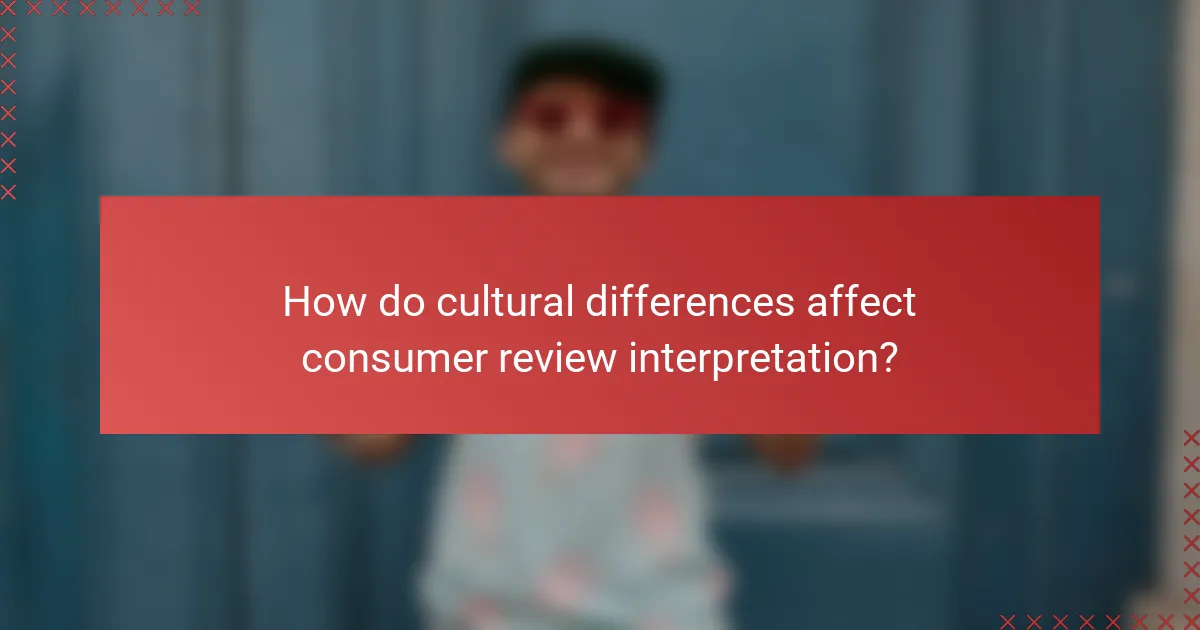Consumer reviews play a crucial role in shaping brand perception, significantly impacting how potential customers assess a brand’s reliability and quality. By analyzing feedback through sentiment analysis and identifying common themes, brands can gain valuable insights that enhance product offerings and customer satisfaction. Leveraging authentic consumer feedback in marketing strategies not only fosters trust but also boosts brand visibility and credibility.

How do consumer reviews impact brand perception?
Consumer reviews significantly shape brand perception by influencing how potential customers view a brand’s reliability and quality. Positive feedback builds trust, while negative comments can lead to skepticism and hesitation in purchasing decisions.
Positive reviews enhance brand trust
Positive consumer reviews create a perception of credibility and reliability for a brand. When customers share their satisfaction, it signals to others that the brand delivers on its promises, fostering a sense of trust. Brands with a high volume of favorable reviews often see increased customer engagement and loyalty.
For example, a restaurant with numerous glowing reviews on platforms like Yelp or TripAdvisor is likely to attract more diners. This trust can translate into higher sales and a stronger market position.
Negative reviews can damage reputation
Negative reviews can significantly harm a brand’s reputation, leading to lost sales and diminished customer trust. A single negative review can deter potential customers, especially if it highlights serious issues like poor service or product defects. Brands must actively manage their online reputation to mitigate the impact of such reviews.
For instance, a tech company with a few critical reviews about product malfunctions may see a decline in sales, even if the majority of reviews are positive. Addressing these concerns promptly can help repair the brand’s image.
Influence on purchasing decisions
Consumer reviews play a crucial role in influencing purchasing decisions, often serving as a key factor in the buyer’s journey. Many shoppers read reviews before making a purchase, with a significant percentage stating that they trust online reviews as much as personal recommendations.
Brands should encourage satisfied customers to leave reviews and respond to feedback to enhance their visibility and attractiveness. This engagement can sway undecided buyers and increase conversion rates.
Impact on customer loyalty
Customer loyalty is often strengthened by positive reviews, as satisfied customers are more likely to return and recommend the brand to others. Brands that consistently receive high ratings foster a community of loyal advocates who contribute to ongoing success.
Conversely, negative reviews can erode loyalty, prompting customers to explore alternatives. Brands should focus on delivering exceptional products and services to maintain a loyal customer base and encourage repeat business.

What are effective strategies for interpreting consumer reviews?
Effective strategies for interpreting consumer reviews include utilizing sentiment analysis tools, identifying common themes, and establishing customer feedback loops. These methods help brands gain actionable insights from customer opinions, enhancing product offerings and improving overall satisfaction.
Sentiment analysis tools
Sentiment analysis tools use natural language processing to evaluate consumer reviews and categorize them as positive, negative, or neutral. This automated approach allows brands to quickly gauge public perception and identify areas needing improvement.
When selecting a sentiment analysis tool, consider factors such as accuracy, ease of integration, and cost. Popular options include tools like Lexalytics, MonkeyLearn, and Google Cloud Natural Language, which can handle varying volumes of data efficiently.
Identifying common themes
Identifying common themes in consumer reviews involves analyzing feedback for recurring topics or issues. This can be done manually or through software that highlights frequent keywords and phrases, helping brands understand what customers value most.
To effectively identify themes, categorize reviews by product features, customer service experiences, or specific pain points. This structured approach can reveal insights into customer preferences and guide product development or marketing strategies.
Utilizing customer feedback loops
Utilizing customer feedback loops means actively engaging with consumers to gather their insights and opinions continuously. This can involve follow-up surveys, social media interactions, or direct outreach after purchase, ensuring that customer voices are heard and considered.
Establishing a feedback loop encourages customers to share their experiences and fosters a sense of community. Brands should respond to feedback promptly and transparently, demonstrating that they value customer input and are committed to making improvements based on their suggestions.

How can brands leverage consumer reviews for marketing?
Brands can effectively leverage consumer reviews for marketing by integrating authentic feedback into their promotional strategies. This approach not only builds trust with potential customers but also enhances brand visibility and credibility.
Showcasing testimonials in campaigns
Incorporating testimonials into marketing campaigns can significantly impact consumer perception. Brands should select reviews that highlight key product benefits and resonate with target audiences. For instance, a skincare brand might feature a customer’s success story about improved skin health, which can attract similar consumers.
Utilizing various formats, such as video testimonials or social media posts, can further enhance engagement. Brands should aim to showcase a diverse range of testimonials to appeal to different demographics and preferences.
Using reviews for product development
Consumer reviews provide valuable insights that can guide product development. Brands should analyze feedback to identify common themes, such as desired features or recurring issues. This data can inform adjustments or new product lines, ensuring offerings align with customer expectations.
For example, if multiple reviews mention a need for a more durable product, brands can prioritize enhancements in that area. Regularly monitoring reviews can help brands stay ahead of trends and maintain a competitive edge.
Engaging with customers through feedback
Engaging with customers through their feedback fosters loyalty and encourages repeat business. Brands should actively respond to reviews, thanking customers for positive feedback and addressing concerns in negative reviews. This interaction demonstrates that the brand values customer opinions and is committed to improvement.
Additionally, brands can encourage customers to leave reviews by offering incentives, such as discounts or loyalty points. This not only increases the volume of feedback but also strengthens the relationship between the brand and its consumers.

What are the best platforms for gathering consumer reviews?
The best platforms for gathering consumer reviews depend on your business type and goals. Popular options include Trustpilot for e-commerce, Yelp for local businesses, and Google Reviews for enhancing visibility.
Trustpilot for e-commerce
Trustpilot is a leading platform specifically designed for e-commerce businesses to collect and showcase customer feedback. It allows companies to create a profile where customers can leave reviews, which can significantly enhance credibility and trust.
When using Trustpilot, ensure you encourage customers to leave reviews after their purchase. Responding to reviews, both positive and negative, can foster engagement and show potential buyers that you value customer feedback.
Yelp for local businesses
Yelp is a prominent platform for local businesses, allowing customers to share their experiences and rate services. It is particularly effective for restaurants, shops, and service providers looking to attract local clientele.
To maximize your presence on Yelp, claim your business page and keep it updated with accurate information. Engaging with reviewers by responding to feedback can improve your reputation and encourage more customers to visit.
Google Reviews for visibility
Google Reviews is integrated with Google My Business, making it crucial for any business aiming for online visibility. Positive reviews can enhance your search rankings and attract more customers through Google Search and Maps.
To leverage Google Reviews, prompt satisfied customers to leave feedback directly on your Google profile. Regularly monitor and respond to reviews to maintain a positive online presence and address any concerns promptly.

How do cultural differences affect consumer review interpretation?
Cultural differences significantly influence how consumers interpret reviews, impacting their perceptions and purchasing decisions. Variations in values, communication styles, and social norms shape the way feedback is expressed and understood across different regions.
Variations in feedback expression
Consumers from different cultures may express their feedback in distinct ways. For instance, individuals from collectivist societies often prioritize harmony and may provide more indirect or nuanced reviews, while those from individualistic cultures might be more straightforward and critical. This can lead to misunderstandings if brands do not recognize these differences.
Additionally, the use of language and emotional expression varies widely. In some cultures, positive feedback may be understated, while in others, it can be exuberant. Brands should be aware of these nuances to interpret reviews accurately and respond appropriately.
Regional preferences in review platforms
Different regions have distinct preferences for review platforms, which can affect the volume and type of feedback received. For example, in the United States, platforms like Yelp and Google Reviews dominate, while in Europe, TripAdvisor and Trustpilot may be more popular. Understanding these preferences helps brands focus their efforts on the most relevant channels.
Moreover, the credibility of reviews can vary by platform and region. In some cultures, peer recommendations on social media may carry more weight than formal reviews, while in others, professional critiques are valued. Brands should tailor their strategies to align with regional expectations and behaviors to maximize their impact.

What metrics should brands track in consumer reviews?
Brands should track several key metrics in consumer reviews to gauge customer sentiment and identify areas for improvement. The most important metrics include overall rating trends, response rates to reviews, and review volume over time.
Overall rating trends
Overall rating trends provide insight into how customers perceive a brand over time. Brands should monitor average ratings across different platforms to identify patterns, such as seasonal fluctuations or the impact of specific marketing campaigns. A consistent decline in ratings may signal underlying issues that need addressing.
For effective tracking, brands can calculate the average rating monthly or quarterly and compare it against previous periods. This helps in understanding customer satisfaction and making informed decisions to enhance product offerings.
Response rates to reviews
Response rates to reviews indicate how actively a brand engages with its customers. High response rates can enhance customer loyalty and demonstrate that a brand values feedback. Brands should aim for a response rate of at least 30-50% to maintain a positive relationship with consumers.
To improve response rates, brands can implement a structured approach to review management, ensuring timely replies to both positive and negative feedback. This not only shows attentiveness but also helps in mitigating potential damage from negative reviews.
Review volume over time
Review volume over time reflects customer engagement and can influence a brand’s visibility and credibility. A steady increase in review volume is generally a positive sign, indicating growing customer interest and trust. Brands should aim for a consistent influx of reviews to maintain relevance in competitive markets.
To encourage more reviews, brands can implement strategies such as follow-up emails post-purchase or incentives for customers to share their experiences. Monitoring review volume trends monthly can help brands identify successful tactics and adjust strategies accordingly.
